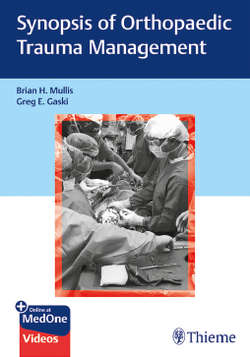Читать книгу Synopsis of Orthopaedic Trauma Management - Brian H. Mullis - Страница 47
На сайте Литреса книга снята с продажи.
II. Types of Studies
ОглавлениеA. Experimental (▶Fig. 5.1)
1. Prospective, randomized controlled trial:
a. One or more interventions with a “control” group.
b. Patient enters study at beginning of treatment via a randomization process and data is gathered moving forward.
c. Defined end points.
i. Primary outcome: Did the intervention change the rate of occurrence of this outcome? For example, did infection of an open fracture requiring surgical intervention occur more or less frequently with the intervention than in the control group? These are usually discrete (yes/no, defined time points, quantifiable).
ii. Secondary outcomes: Did the intervention change rates of occurrence for one or more other outcomes? For example, did patients with open fractures in the intervention group report improved or poorer outcomes than in the control group? These should be as discrete as possible but could be qualitative.
2. Prospective cohort comparison study (nonrandomized controlled trial):
a. Gathers data moving forward for similar patients provided two or more differing treatments determined by other factors besides randomization.
b. Less controlled studies at risk of selection bias (e.g., surgeon preference, patient desires, etc.).
Fig. 5.1 Diagram of different types of study design.
B. Observational
1. Descriptive:
a. Retrospective case series:
i. Report of a group of patients with a similar condition and/or treatment without any comparison group.
ii. Often represents a report of a single individual’s or institution’s experience.
iii. May be beneficial if reporting a group of patients with bad outcomes, in that it can help guide physicians away from dangerous interventions (e.g., Kirschner wire fixation of femur fractures results in 100% nonunion rates and 95% infection rates).
iv. Limited value if reporting a group of patients with good outcomes, in that it does not provide evidence that the intervention is better or worse than other commonly accepted interventions.
2. Analytical:
a. Prospective cohort study:
i. Gathers data moving forward on a novel treatment without a different intervention group.
ii. Patients are identified based on exposure (e.g., femur fracture) and followed over time to determine who develops a particular outcome of interest (e.g., infection, nonunion).
iii. Prospective cohort study with historical controls. Data collected are analyzed and compared to data already in existence at a given institution or to historical reports in the literature.
b. Retrospective cohort comparison studies:
i. Data is already in existence at the time of study development.
ii. Normally entail medical record review (and radiographic review if applicable).
iii. Two or more different treatments are then compared based upon data already in existence with respect to the development of an outcome(s) of interest.
iv. Disadvantage—if data points do not exist, then a potentially important question may not be answered.
c. Case-control study:
i. Retrospective study that determines if an exposure is associated with an outcome.
ii. Patients with a specific outcome or disease such as arthritis (“the cases”) are compared to patients without arthritis (“the control”) and the incidence of potential risk factor(s), such as obesity, are explored in both groups.
iii. Better for rare outcomes as smaller numbers are necessary.
d. Cross-sectional study.
